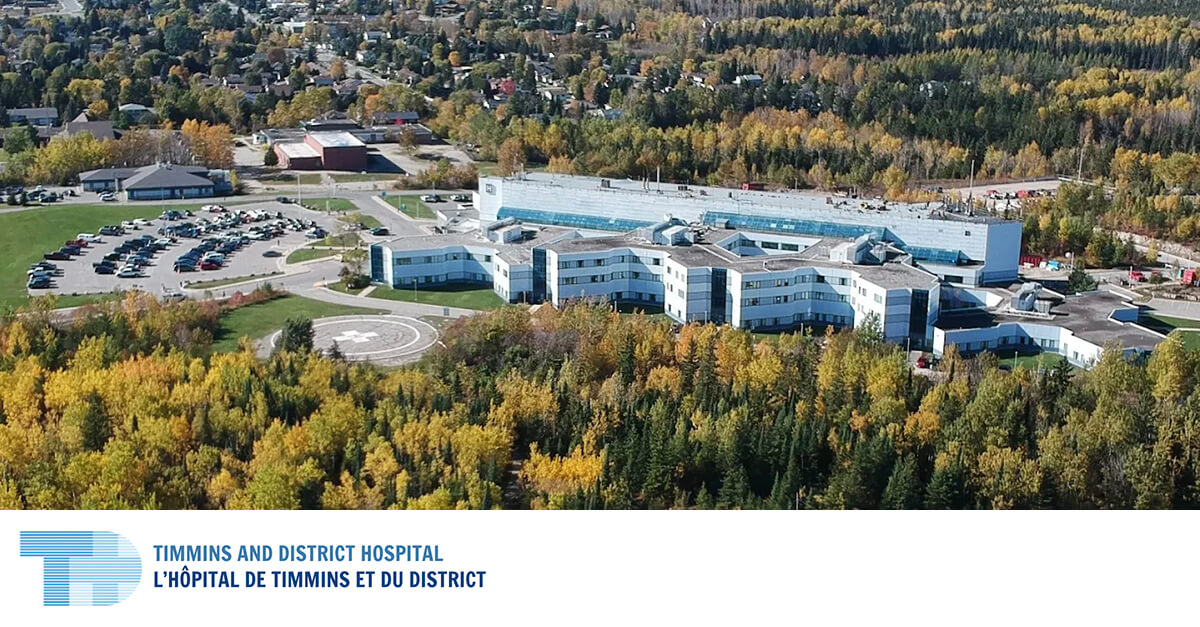On a recent webinar hosted by Digital Health Canada, Andriana Lukich, Director, Digital Solutions for St. Joseph's Healthcare Hamilton (SJHH), shared insights and lessons learned on how her hospital has leveraged deviceless Remote Patient Monitoring (RPM) to transform surgical care.
Deviceless RPM, or digital care journeys, involves leveraging a patient’s own smartphone, tablet or computer to send patients reminders, deliver education and remotely monitor symptoms - such as for pre and post-surgery, oncology, women’s health and chronic care. The idea is to enable a more scalable technology approach to a larger variety and volume of patients than a more resource-intensive device-based RPM program that requires every patient to be sent a kit with medical devices.

Since 2021, SJHH has been using Epic and MyChart integrated deviceless RPM (SeamlessMD) to care for patients across Orthopedics, General Surgery, Bariatrics, Urology and Thyroid surgeries.
Why? SJHH needed innovative ways to enable safer transitions from hospital to home in a post-COVID world.
As Andriana explains: “So the conversation we had at St. Joes is: how can we use technology to support these key drivers and get patients through the hospital quicker at home, comfortable resting and recovering appropriately?”
You can watch the whole webinar here. Below are 7 lessons that Andriana shared:
1. Deviceless RPM can reduce length of stay and increase input - while keeping patients healthy at home and out of the ED
A key goal for SJHH’s initiative was to “decrease length of stay and really therefore increase our throughput through our surgical program.”
SJHH’s program was highly successful, as Andriana explains: “we were able to decrease our average length of stay by about 68% or 2.4 days… decrease our 30-day readmission rate by 2%... and the latest and greatest data for ED visits within 30 days has also decreased nearly 20% at 17%... exciting to see that we're actually moving the needle and that the outcomes that we can achieve are tangible!”
__min.png)
2. Deviceless RPM can enhance patient comfort and confidence
Patient feedback played a crucial role in gauging the success of the program: "The gratitude that we've heard from patients for just providing them with these extra contact points has been immense."
Andriana also shared feedback from patients, emphasizing the impact of the program on patient comfort and confidence during recovery. Patients expressed gratitude for the ability to receive real-time feedback, with one stating, "It made me feel secure and less anxious knowing that I was being checked on every day." This underscores the importance of incorporating patient feedback and fostering a sense of security throughout the care journey.
3. Offering multiple channels for patient access - including both standalone, patient portal integration and digital front door integration options - maximizes patient adoption
The hospital's approach to patient access was flexible, offering multiple ways for patients to interact with the SeamlessMD platform - essentially enabling a flexible yet unified digital patient experience.
Patients can choose to engage “through the web browser, the SeamlessMD smartphone app, or through an integrated experience through their MyChart app" or even via the St Joes Navigator (Ontario Trusted Account) digital front door app, where “the idea is once they go through that one digital front door (Ontario Trusted Account)... community resources are all available for them."
__min.png)
4. EHR integration is key to streamlining clinician workflows for patient enrollment and remote monitoring
Integrating SeamlessMD with Epic via SMART on FHIR streamlined clinician workflows by reducing data entry time for patient enrollment and providing real-time access to patient data for monitoring. This integration ensures that clinicians can efficiently monitor and respond to patient data without navigating multiple systems.
As Andriana described: “We've been able to effectively embed that [SeamlessMD dashboards] right within our Epic system… and it's actionable. So, if nurses need to take action, they're able to do that from within the workflows that they're in… and the integration and interoperability means that the information is flowing to the right places and can be used for things like following up with patients."
__min.png)
5. Involve the hospital data team from early on to demonstrate ROI quickly
Often healthcare teams implement new innovations, and then ask help from the data team later to measure success and ROI. However this can delay access to data given the multitude of other priorities in the organization.
Instead, SJHH intentionally involved the data team in their RPM initiative from Day 1. As Andriana shared: “The data team was at the table. And so when we talk about how you're going to construct the workflows, the care pathways, understand where you can pull from data, it all needs to sort of start from that beginning and mapping your current state, understanding what that future state will look like and defining any potential gaps or risk points with how you'll actually be able to collect that data.”
6. Identify and empower change leaders
Recognizing the need for dedicated individuals to champion the change, Andriana stressed the significance of identifying change leaders within the organization. At SJHH, they have a project manager that is dedicated to the RPM program and ensuring its success.
Andriana noted: "You do need someone who's going to be dedicated to this work... find that coalition of the willing, and then continue to mature and evolve the program." Change leaders play a vital role in driving adoption and ensuring the longevity of innovative healthcare programs.
7. Change management requires acknowledging and addressing discomfort with staff
Some hospital staff are going to be apprehensive with change, especially if it involves new technology. Andriana emphasized the need to understand and communicate the "why" behind technology adoption, stating, "You can't just say, 'Here's the technology. It's great. Use it.' You've got to really make them understand the why and make them feel confident in their ability."
.svg)










.png)
